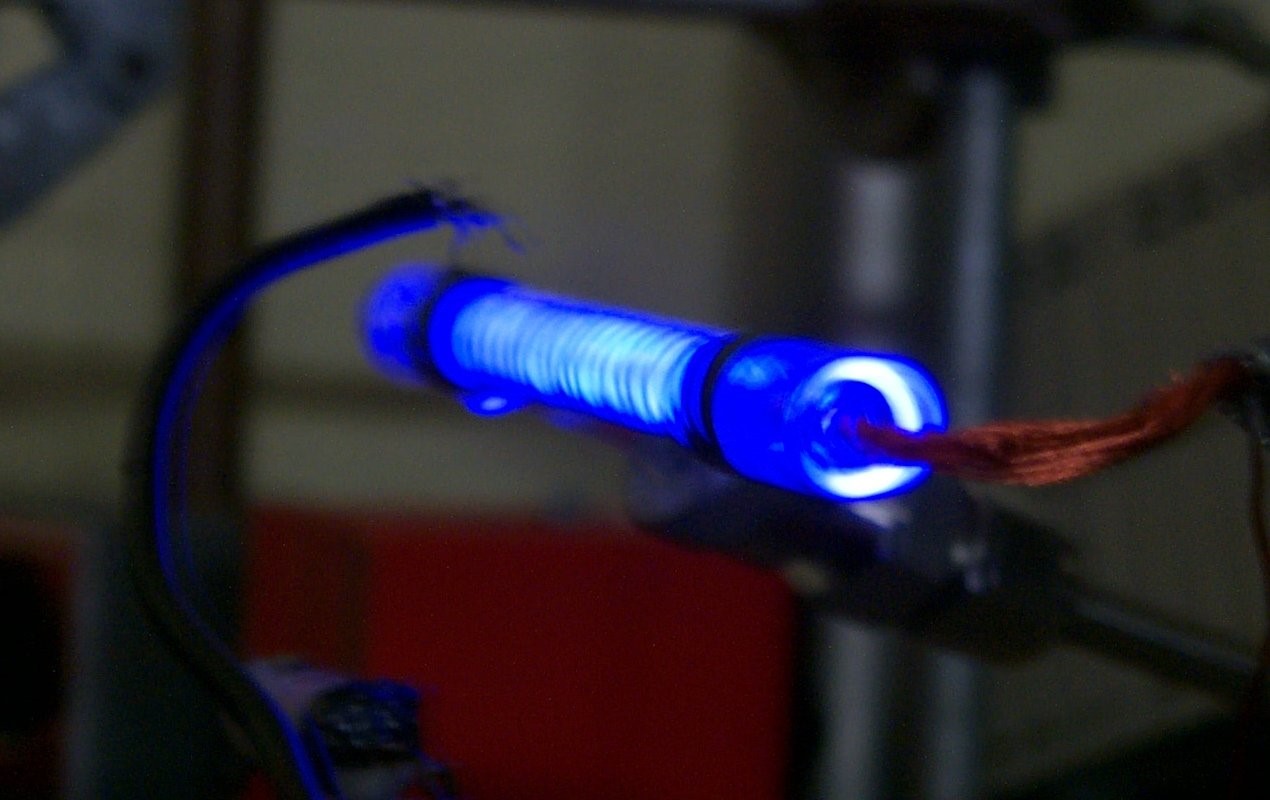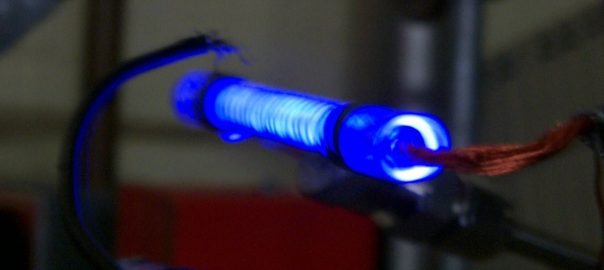Plastic wastes are a global problem. If you’ve been following the series of environmental horror stories in the media this year you know exactly what I mean. It’s bunk.
Even undiscovered species living in the deepest parts of the ocean are contaminated with plastic. Because humans bioaccumulate plastic from the environment, especially animals we eat from the sea like fish, we are sadly far from safe in this rather disturbing cycle.
At the time of writing there is no safe threshold for consuming plastics and research on whether eating plastic in certain quantities has ill health effects is ongoing. Time will tell. But in the meantime here’s an idea that may interest you:
We could prevent the majority if not all (optimistic here) waste plastics from entering the land and sea by using them as a resource.
How? One of the answers may lie in the ever so humble ‘cold plasma’.
Now before you turn your nose up and decide ‘that’s way too gross for me to handle right now’. I’m not talking about blood plasma. I’m referring to the fourth state of matter that we humans call plasma. Most of the matter in the universe is in fact plasma. I will save this epic tale for another time, but I encourage you to read about plasma here.
Ok, to put it simply, physicists define plasma as an ‘ionised gas’. But wait…I thought it was something different? It is, because in plasma electrons break free from their atoms and become highly energised. And once they do they are capable of amazing things like (wait for it) breaking down plastics into things that people use, which goes a step beyond ‘recycling’.
If done properly recycling helps, but we’re far from resolving the waste plastics problem through recycling alone and something needs to be done. The magic word here is ‘circular economy’. Fancy that – an economy that follows a circle.
Yep, a circle. Kind of like how those tiny pieces of plastic from carelessly discarded plastic shopping bags in the ocean made it into your gut after devouring a takeaway fish from the local chippy or fast food joint – that kind of circle. If plastics were used as a resource in a circular economy it would begin to paint a different picture. In the case of a widely used type of plastic known as HDPE (high-density polyethylene), it could be converted into all kinds of useful things, such as ethylene and hydrogen.
Ethylene is the basic building block for making (you got it) plastics. 80% of the global production of ethylene is used to make HDPE and LDPE for plastic products. Most of it is manufactured from fossil fuels, namely crude oil. If much of it was produced from waste HDPE instead it would help reduce dependence on oil and prevent plastic pollution at the same time. And hydrogen is basically one of the core fuels for sustainable energy and transport, not to mention useful for loads of other applications. Exciting? In the words of nearly every one of my favourite characters in The Wire: ‘mos def’. So let’s kick it.
Dr Anh Phan (not just a cool name) and colleagues have experimented with a new, advanced form of pyrolysis for HDPE. Pyrolysis decomposes materials at high temperatures and generates energy.
Dr Phan and her team have been successful in using cold plasma pyrolysis to do this but with far more exciting results. For starters they get 55 times more ethylene from HDPE compared to conventional pyrolysis. They also get more hydrogen, about 0.4-1.7% of plastic weight, which is converted from HDPE directly.
690,000 tons of HDPE was generated in the US in 2010 alone and only 4.3% of it was recycled. In 2014, 31% of HDPE in the EU was disposed of in landfills and 89% in the US. Starting to see the bigger picture?
Back to the plasma. ‘Cold plasma’ has hot electrons but cool gas/molecules, which makes them ‘chemically selective’, particularly when combined with catalyst(s) and useful for converting plastic wastes into useful chemicals. The cold plasma is generated when voltage is applied between two electrodes separated by a dielectric barrier. Here’s a cool photo that shows how this works in principle.

As mentioned earlier, because the plasma gives electrons an energy boost it breaks down or ‘cracks’ the chemical bonds in HDPE to derive a variety of products from it, essentially turning heavy hydrocarbons into lighter ones.
In conventional pyrolysis, to maximise the gas yield the temperature needs to be above 700 C. Cold plasma pyrolysis mentioned here operates at 500 C. At 600 C it yields 63% gas that consist of hydrogen, methane and hydrocarbons. That’s a lot actually.
What kinds of plastics were used? Plastic bags were one source of HDPE and were found to have a high oxygen content. Heavier plastics like milk or bleach bottles, which had lower oxygen content, were used in all experiments. The presence of oxygen in the feedstocks for cold plasma pyrolysis varied the composition of the products if it was released from the plastics. Something worth noting for future research.
The process overall requires little energy and electricity for generating the cold plasma could be sourced from renewables, with the chemical products produced acting as a kind of energy storage. According to Dr Phan, if mixed plastics are used a small amount of CO2 is produced, however, this could be used as a feedstock or reagent for biorefining.
Next steps for the work: optimise the reactor design for cold plasma pyrolysis and transition to a full scale laboratory process.
To recap. Plastics make up 10-13% of municipal solid wastes. We are throwing them away all the time, so they end up in pretty much everything, including the food we eat. 12% of this waste is HDPE which is used in many plastic products including packaging, which shockingly is used for less than a month, but takes around 100 years to biodegrade.
Based on the findings from Dr Phan and colleagues we could actually be using HDPE and possibly other plastics as a chemical and fuel resource, instead of needlessly wasting them or even burning them. While it’s fashionable to incinerate plastic and other wastes to generate energy, wouldn’t it make more sense to recover the materials instead?
If you look at what goes into making plastics i.e. fossil fuels, and realise that they could be converted into useful materials, suddenly plastics become a valuable resource in a low-carbon circular economy.
Could we be heading towards a future world where people mine former landfill sites to recover plastics when resources become scarce? Let’s hope we never go down that path and get it right now by not wasting them in the first place.
Further reading:
- Paper: S. Diaz-Silvarrey, K. Zhang and A. N. Phan, Monomer recovery through advanced pyrolysis of waste high density polyethylene (HDPE) Green Chem., 2018, DOI: 10.1039/C7GC03662K.
- ‘How we can turn plastic waste into green energy, The Conversation https://theconversation.com/how-we-can-turn-plastic-waste-into-green-energy-104072
brett.cherry@newcastle.ac.uk

am a renewable energy student and the information has been helpful .
Cheers, thanks for reading. Plan to have more stuff on this topic as it comes in.
my email is georgenjaun@gmail.com I hope to get in touch with you
I also have some questions regarding the cold plasma reactor (what’s the catalyst used)
For those further interested in this research, the paper is available using this link: https://eprint.ncl.ac.uk/246794
I am thinking of carrying out a research on plastic waste and this is really enlightening. I would like to know more about this method.
Loving the speed of the advances here. I’m a huge fan of pyrolysis and work with a number of clients. Getting a permit for an operational plant would be tricky, but awesome.
Thanks for your comment Graeme. There has been a lot of attention to this research and similar areas. Hopefully the circular economy will pay attention.